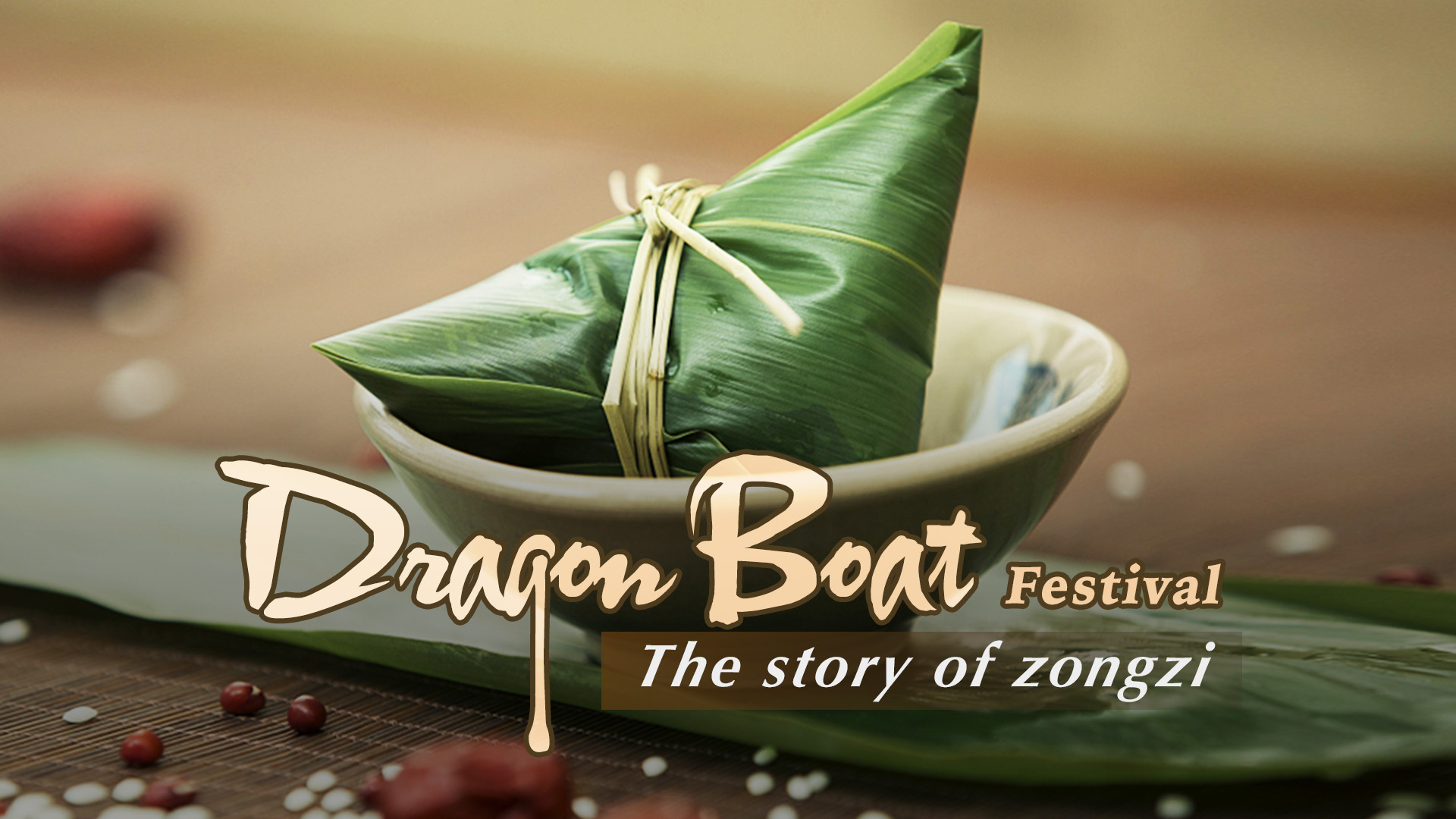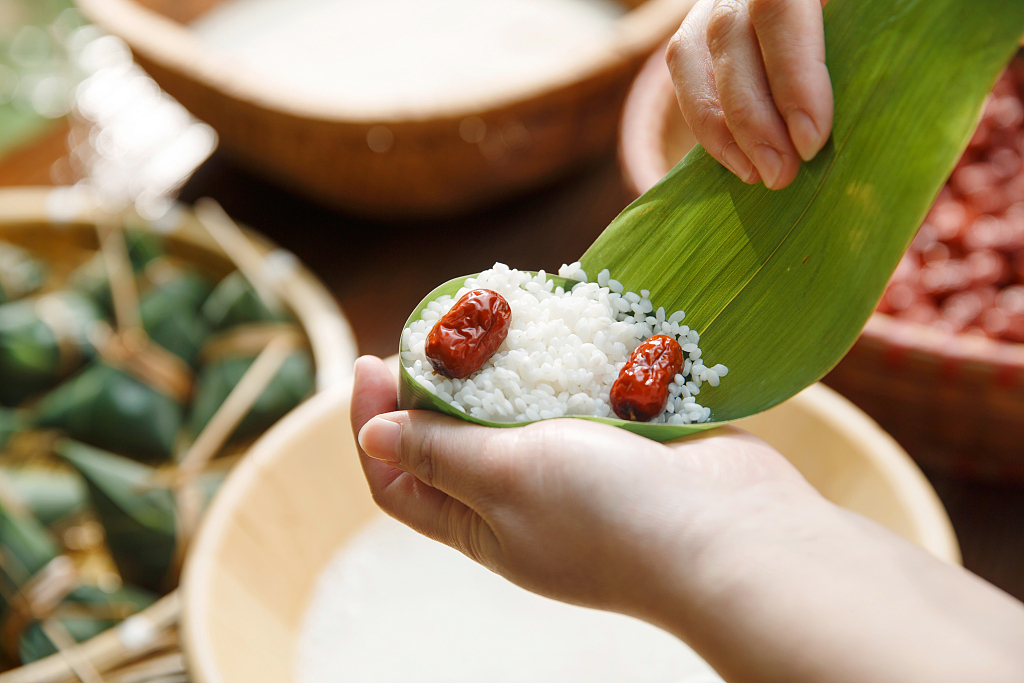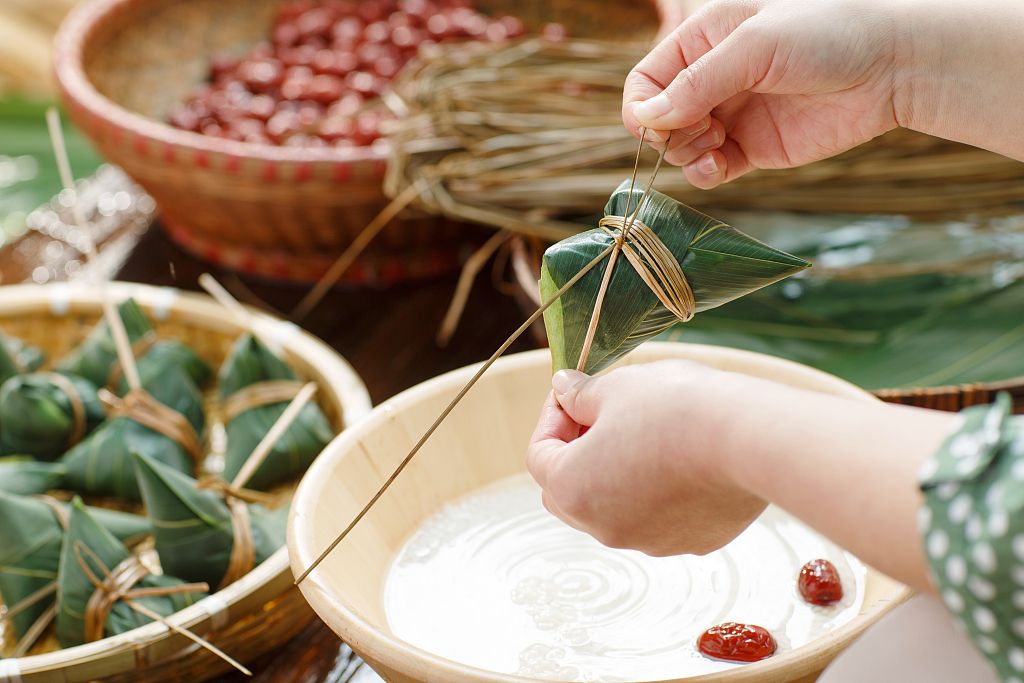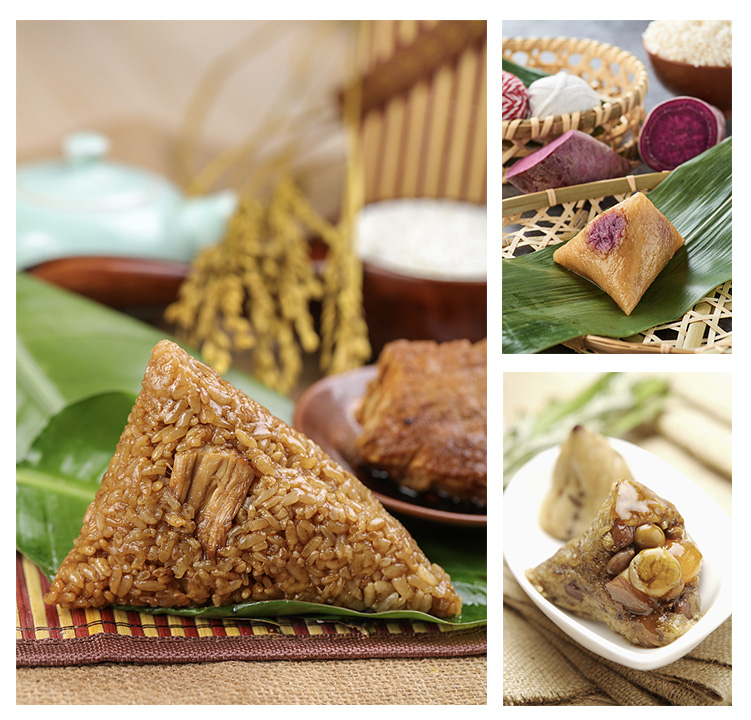
Culture China
00:16, 07-Jun-2019
Fete Dragon Boat Festival with traditional zongzis and a slice of history
Updated
09:39, 07-Jun-2019
By Jiang Qingrui
04:05

The Dragon Boat Festival falls on June 7 this year. The traditional festival honors a patriotic poet who killed himself by jumping into a river as his country fell into the hands of invaders.
The festival usually falls on the fifth day of the fifth month on the lunar calendar, and for that reason it is know as "wuyuejie" or "the festival on the fifth month."
But how do Chinese people celebrate Dragon Boat Festival?
Customs and culture
On this day, people hang fresh Chinese mugwort twigs on the entrances to their houses, while children wear sachets with mugwort leaves inside around their necks and wrap five-colored threads around their wrists. The plant's scent is thought to help drive away pests, while the colorful bracelet is a prayer for well-being.

Dragon Boat Festival is an occasion to eat zongzi. /VCG Photo
Dragon Boat Festival is an occasion to eat zongzi. /VCG Photo
People living in south China, where lakes and rivers are in no short supply, also enjoy dragon boat races.
As time passes, many traditions have faded away. However, one custom that remains popular is eating zongzi, a delicious glutinous rice dumpling wrapped in reed or bamboo leaves and shaped like a small pyramid.
A bite of history
In folk tales, the zongzi commemorates the death of Qu Yuan, a court adviser and patriotic poet of the Chu State (1130 B.C to 223 B.C.).
On the fifth day of the fifth month in the year 278 B.C., the army of the State of Qin seized the capital of Chu. Qu was so devastated as he saw his country falling into the enemy's hands that he jumped into the Miluo River, ending his life.
To prevent his body from being eaten by fish, people put rice in bamboo tubes and dropped them in the river so water dwellers can feed on them instead. For the longest time, it was thought that the tongzong (tubed zongzi) was the predecessor of zongzi, but experts have refuted this theory. The actual origin of zongzi thus remains a mystery.

Zongzi is wrapped in leaves. /VCG Photo
Zongzi is wrapped in leaves. /VCG Photo
During the Spring and Autumn Period (770 B.C -476 B.C.), there was jiaoshu, a kind of millet dumpling wrapped in manchurian rice grass leaves, that took the shape of bull horns. There were also tongzong in bamboo tubes.
In the Jin Dynasty (265-420) zongzi began to be prepared as a special food during the Dragon Boat Festival. In addition to glutinous rice, people added herbs and nuts, calling it "yizhizong" or intelligence-boosting zongzi.
Zongzi became more diversified in the Northern and Southern Dynasties (420-589), with more ingredients like meat, chestnuts, jujubes, and red beans used in the stuffing. The trend was further developed in the Song Dynasty (960-1279), when preserved fruits also became an ingredient.

A combined photo shows zongzi with three different stuffings: meat (left), sweet potato (right, up), and egg yolk (right, down). /VCG Photo
A combined photo shows zongzi with three different stuffings: meat (left), sweet potato (right, up), and egg yolk (right, down). /VCG Photo
The Yuan (1271-1368) and Ming (1368-1644) dynasties were important transitional times for zongzi. The wrapping was no longer manchurian rice grass leaves, and Indocalamus longiauritus, a kind of broad-leaved bamboo leaves, was used instead. Later reed leaves were also considered as an option. The wrapping remained unchanged till today.
Now zongzi is more diversified than ever, with every possible ingredient used in the making of the stuffing. However, there are generally two distinct flavor profiles: sweet and salty.
People in northern China prefer sweet zongzi, which often includes jujubes and red bean paste, while southerners love savory ones with salted duck egg yolks and meat.
Watch the video at the top of the page to learn how to make traditional zongzi with jujubes and glutinous rice.
On this Dragon Boat Festival, try your hand at making zongzi and enjoy its unique taste!
Director: Jiang Qingrui
Video Editor: Jiang Qingrui
Videographer: Ma Jian
Designer: Yin Yating, Jia Jieqiong
Copy Editor: Xuyen Nguyen
Chief Editor: Lin Dongwei

SITEMAP
Copyright © 2018 CGTN. Beijing ICP prepared NO.16065310-3
Copyright © 2018 CGTN. Beijing ICP prepared NO.16065310-3